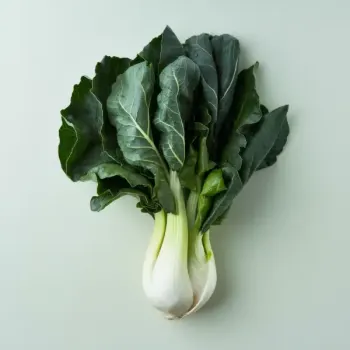Miso Paste vs Vegetable Stock are culinary ingredients used to enhance the flavors of dishes; miso offers a rich umami taste, while vegetable stock provides a light, aromatic base.

Miso paste is a traditional Japanese seasoning produced by fermenting soybeans with salt and koji (a type of fungus). It comes in various flavors and colors, depending on the fermentation duration and ingredients used.

Vegetable stock is a flavorful liquid made by simmering vegetables, herbs, and sometimes spices. It's used as a base for soups, sauces, and other dishes, adding a subtle, aromatic flavor.
Miso paste delivers a complex, savory taste known as umami, with a thick texture perfect for adding depth to dishes. Vegetable stock, on the other hand, is a light, clear liquid that provides a gentle flavor foundation. Miso is a fermented ingredient, while vegetable stock is typically fresh or store-bought and not fermented.

Your ultimate Recipe Box, Meal Planner, and Cooking Class all in one
Miso soup, ramen broth, and hearty stews benefit from miso paste's rich umami flavor. It's best added at the end of cooking to preserve its probiotics. Vegetable stock serves as a neutral base for minestrone, vegetable soup, and lentil soup, allowing the natural flavors of the ingredients to shine.
Used in miso glaze for eggplant or fish, miso paste adds a savory punch that's balanced by a hint of sweetness. Vegetable stock is ideal for light pasta sauces or gravies where a subtle flavor enhancement is desired without overpowering the main ingredients.
Miso-marinated tofu or chicken can introduce a deep umami and slightly fermented taste, tenderizing and flavoring proteins. Vegetable stock can be used as a light marinade base for vegetables or grains, adding moisture and a hint of herbal notes.
Miso paste is rich in probiotics and can provide health benefits due to fermentation. Vegetable stock is typically low in calories and can be a source of vitamins depending on the vegetables used.
| Nutrient | Miso Paste ( per Cup ) | Vegetable Stock ( per Cup ) |
|---|---|---|
| Fat | 6g | 0g |
| Sodium | 3700mg | 240mg |
| Protein | 11g | 0g |
| Calories | 200 | 17 |
| Carbohydrates | 26g | 4g |
Miso paste contains more nutrients like protein and probiotics but is also higher in calories and sodium. Vegetable stock is lighter and can be a healthier choice for those monitoring their sodium intake.
Yes, you can use vegetable stock as a base for miso soup, but you will still need to add miso paste to achieve the traditional flavor.
Consider the desired flavor depth and texture. Use miso paste for a rich umami taste and thicker consistency, or vegetable stock for a lighter, more aromatic base.
While you cannot fully replicate miso's unique flavor, adding soy sauce or a dash of fermented bean paste to vegetable stock can introduce a similar umami quality.
While traditional miso is made from soybeans, there are varieties made from other legumes or grains like chickpeas or rice.